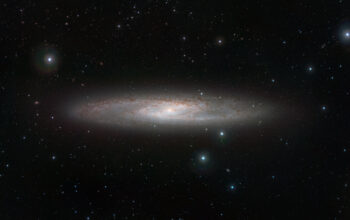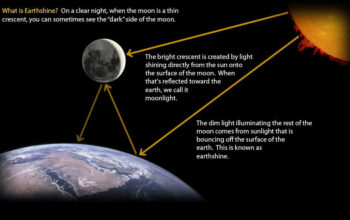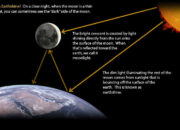The enigmatic phenomenon of cosmic rays has captivated the scientific community for decades, offering tantalizing glimpses into the workings of the universe beyond our terrestrial confines. The origin of these high-energy particles remains an enigma, rooting itself deep within the cosmos and perhaps revealing secrets of the celestial narratives inscribed in the heavens. This article delves into the multifaceted journey of cosmic rays, articulating the intricate processes that generate these particles, their pathways through space, and the scientific endeavors aimed at unveiling their mysteries.
Understanding Cosmic Rays
Cosmic rays are not rays in a traditional sense but rather an array of charged particles that traverse the cosmos at nearly the speed of light. Comprised predominantly of protons, they also include heavier atomic nuclei and high-energy electrons. Upon colliding with Earth’s atmosphere, cosmic rays generate cascades of secondary particles, contributing to a myriad of phenomena observable from our planet’s surface. The majority of cosmic rays are believed to be of extragalactic origin, specifically stemming from high-energy astrophysical sites such as supernovae, active galactic nuclei, and possibly gamma-ray bursts.
The Journey Through Space
As cosmic rays embark on their arduous journey across the cosmos, they encounter a plethora of obstacles. The interstellar medium, composed of gas and dust, acts as a pitfall, dispersing and interacting with these high-energy particles. Yet, in their relentless pursuit, they traverse vast distances, potentially originating from regions light-years away. The magnetic fields pervading the universe engender a complex trajectory for these particles, often causing their paths to curve—a phenomenon that obscures their origins but also enriches their stories.
Historical Context: The Discovery of Cosmic Rays
The fascination with cosmic rays expedited their discovery in the early 20th century. Viktor Hess’s pioneering work in 1912 culminated in the identification of cosmic radiation during balloon ascents, igniting further inquiry into their nature. This initial exploration laid the groundwork for subsequent investigations, culminating in the realization that cosmic rays were vital to understanding high-energy astrophysics. The trajectory of cosmic ray research has evolved significantly, propelled by technological advancements that illuminate their mysteries.
Sources of Cosmic Rays: Unmasking the Culprits
A critical component of cosmic ray research lies in discerning their sources. A plethora of hypotheses has emerged regarding the origins of these extraordinary particles, leading to the identification of several primary sources:
- Supernova Explosions: Supernovae are heralded as one of the most significant contributors to the cosmic ray ensemble. The immense energy released during these stellar deaths accelerates particles to fantastic speeds, effectively propagating them into interstellar space.
- Active Galactic Nuclei: The voracious feeding of supermassive black holes in the nuclei of galaxies generates powerful jets that accelerate particles to ultra-high energies, contributing significantly to the cosmic ray flux observed on Earth.
- Gamma-Ray Bursts: These cataclysmic events serve as a source of celestial radiation, releasing bursts of energy that may accelerate particles beyond traditional bounds, warranting further investigation.
- Other Potent Sources: Instances of magnetar flares, colliding neutron stars, and other extreme cosmic phenomena may also play a role in the cosmic ray cycle, painting a more comprehensive portrait of their origins.
The Role of Ground-Based and Space-Based Observatories
To unravel the intricate tapestry of cosmic origins, both ground-based and space-based observatories play pivotal roles. Ground facilities like the Pierre Auger Observatory and the Telescope Array capitalize on the extensive particle cascades induced by cosmic ray interactions with the atmosphere, enabling the analysis of their primary energies and arrival directions. Conversely, space missions such as the Alpha Magnetic Spectrometer aboard the International Space Station scrutinize cosmic rays directly, unveiling characteristics that elude ground observations. The synergistic cooperation between these observatories greatly enriches the dataset available for analysis.
The Mystique Surrounding Cosmic Ray Anomalies
While most cosmic rays adhere to established paradigms of source identification, anomalies persist. Recent observations suggest the existence of ultra-high-energy cosmic rays whose origins challenge conventional understanding. These enigmatic particles, exceeding energies of 10^20 eV, defy current astrophysical models, engendering speculation regarding exotic sources beyond known frameworks or even potential signatures of new physics. Such inconsistencies provoke deeper examination, compelling researchers to innovate new methodologies and theoretical frameworks.
The Future of Cosmic Ray Research
As research progresses, the tantalizing possibility of unearthing the elusive origin story of cosmic rays continues to beckon. With the advent of advanced detection technologies and an ever-expanding collective knowledge base, the quest to decode the language of the cosmos is more vibrant than ever. The fusion of theoretical input with empirical observations holds the potential to rewrite our understanding of cosmic ray propagation, sources, and their implications for fundamental physics.
Conclusion: A Journey into the Cosmic Unknown
The exploration of cosmic rays encapsulates a compelling narrative of curiosity, innovation, and the eternal quest for knowledge that characterizes humanity’s relationship with the universe. As our instruments grow more sophisticated and our theoretical frameworks expand, the cosmic ray origin story promises to unravel further mysteries imbued within the fabric of space and time. Each cosmic ray that reaches Earth is not merely a particle; it is a messenger from the farthest reaches of the universe, whispering secrets and challenging our understanding of the very nature of existence itself. The sky, indeed, is a canvas painted with the rich colors of cosmic history, waiting to be deciphered by inquisitive minds.










